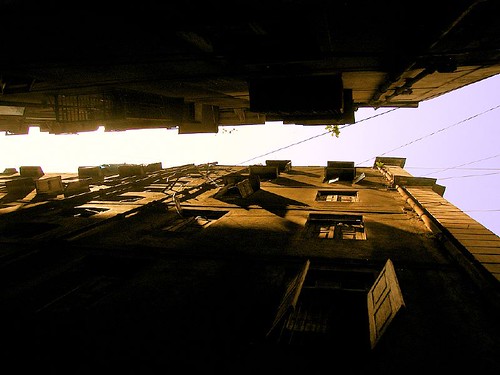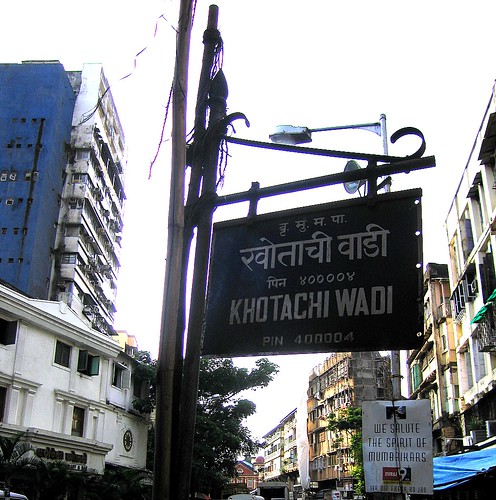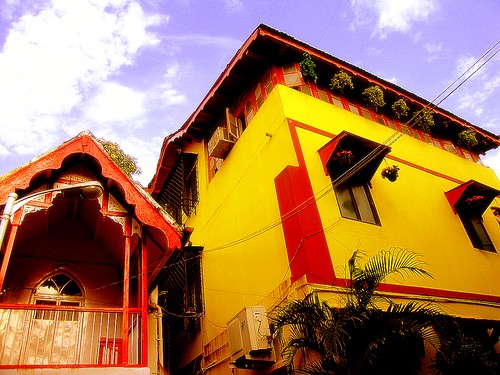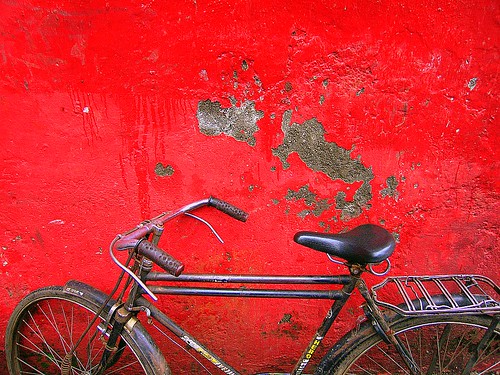
“Pachva Gulli Right koh !” (fifth lane to the right), the paan-wallah said to me has he buttered his limpid green betel leave with chuna (Edible lime) . Heeding his advices, I walked down the buzzing streets of Girgaon passing decrepit yet beautiful Bombaiya buildings, all built in the 1920s and the 1930s the odd ones in the 1900s or 1940s. With their soiled exteriors and cracking interiors they stood there seeing entire through decades through, making me wonder what sights each of them must have born witness too. To my left a steady torrent flow traffic moved , chaotic yet disciplined just in case a mamu [Bombay slang : traffic-cop] lurked at the next corner or at the next intersection. B.E.S.T bus number 88 in her giant red solid iron avatar flashing SRK’s latest lux ad as she pushed her way through the narrow street followed by some yellow & blacks. I peared into each gulli as I passed hoping to see something new and differrent, I would find women hanging out clothes to dry or an elderly bespectacled gentlemen on his old creaky chair watching the world go by as he read his afternoon newspaper. Casual sights for the casual eye.
Girgaon is an interesting part of Mumbai’s social fabric, part of the old urbanised Bombay so to speak. Interestingly like Old Pune is divided into Peths (burrows), Girgaon is divided into Wadis. These sub-divisional hamlets are signs of local urban Indian town planning.
Wadi’s, or hamlets are distinguished by low rise and high density housing with unique architectural and cultural nuances. Most wadis are organized on the basis of religion or caste. Bhangwadi, Popatwadi, Dabholkarwadi and Khotachiwadi are some of the wadis scattered over Mumbai. Though a part of the urban juggernaut their progress seems to have been on another trajectory. They still retain much of their traditional architecture that informs daily life patterns.[source : Khotachiwadi.org]

[Girgaon Road, Mumbai]
This brings me to my destination, one such wadi, Khotachiwadi. I turn right into narrow lanes that marked khotachiwadi and I’m in another world and this time I mean it quiet literally. There is an almost spell bounding change in my environment. From the clutter of multi-storied buildings and the distant shadows of skyscrapers, I now find myself in a goan village, with the architecture and buildings to suit.
Khotachiwadi, typical of any wadi is organized along religion and caste with two communities dominating - the Pathare Prabhu and East Indian Christians. Each has marked Khotachiwadi with their distinct architectural style, festivals,colours and dress.[source : Khotachiwadi.org]

I wandered about it’s narrow lanes, exploring what I could and getting a sense of this amazing place. It was too bad I couldn’t make it to the Khotachiwadi festival [read about it here & here & here], not to mention all the glorious food I missed.
Taking everything in, I talk to Charni Road station a few minutes walk nearby. I snack on very Mumbaisque kheema pau (curried mince) and some garam chai before I catch the 6:32 Vihar fast [train] home.

Unknown
Hi, We are templateify, we create best and free blogger templates for you all i hope you will like this blogify template we have put lot of effort on this template, Cheers, Follow us on: Facebook & Twitter